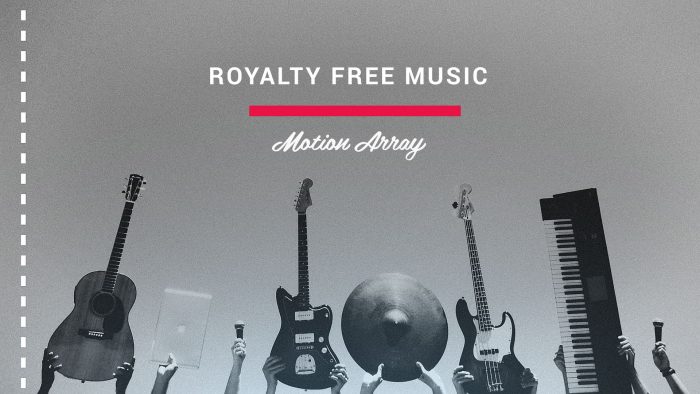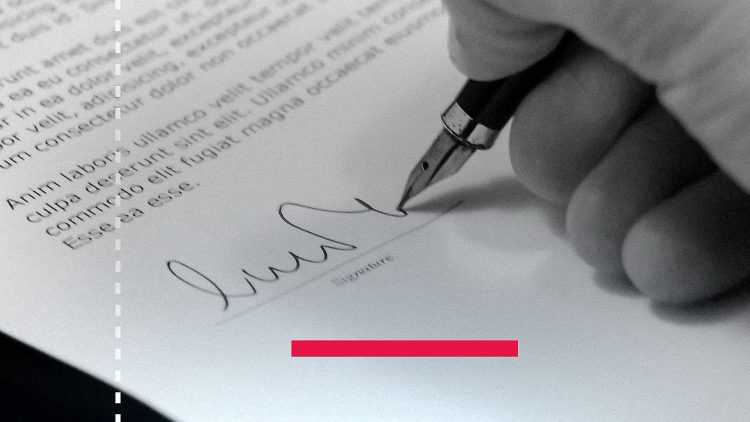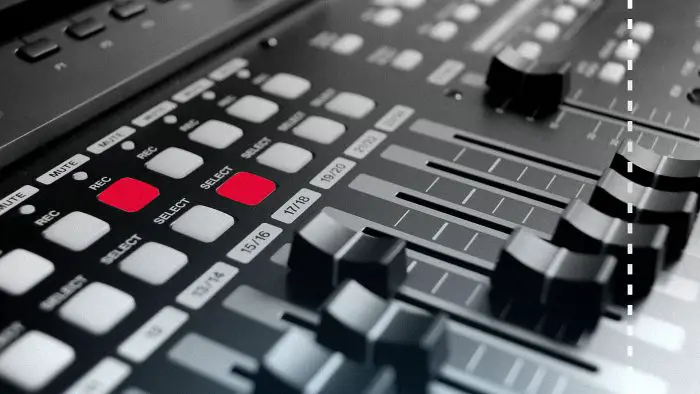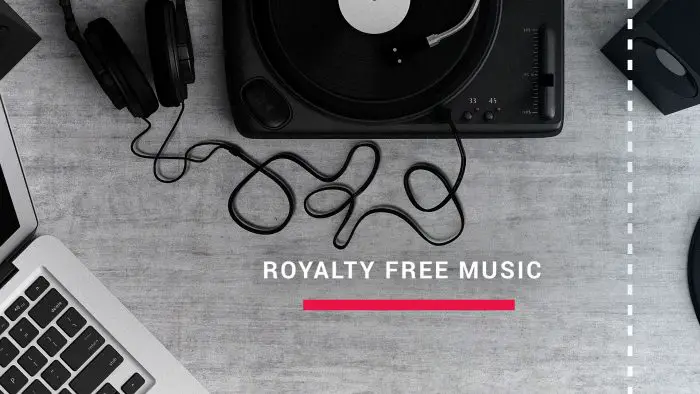We all know the feeling. You’ve just finished editing your video to the point perfection but before you export that thing and call it day, there’s one last thing left to do: throw in some tunes! It seems like a simple enough task. But, for most editors, selecting music is one of the most painstaking steps of the entire video production process.
For this, we have copyright law to blame. Since the vast majority of music out there is licensed and requires authorization to use, finding quality beats that are free for the taking is extremely challenging.

When it comes down to it, editors pretty much only have four options:
- Using licensed music without permission
- Using licensed music with permission
- Having music custom made
- Downloading and using royalty free music
Let’s look at risks and benefits of each one.

Using Copyrighted Music WITHOUT Permission
Let’s say there’s one Arctic Monkeys track that you absolutely love and can’t possibly conceive of making your video without. But for whatever reason—time, budget, laziness—you choose to use the song without first seeking permission.
While you certainly wouldn’t be the first person to do this, just know that there are two major risks that you will be exposing yourself to.
Your video will be blocked on social media
The first is having your video blocked from social media. Most major social media platforms now have content ID systems to scan your video uploads before they’re even published to check for copyrighted songs. If your video contains any, even just a few seconds of one, you’re video will not pass go or collect $200 dollars.
In some cases, YouTube has even gone so far to delete channels that feature videos with commercial music, causing the person who owns the channel to lose all their content and any uncollected income it’s brought in.
Suing isn’t out of the question either
Although it’s unlikely, you could find yourself getting dragged to court by the record label and/or artist who own the rights to the track you’ve just ripped. But chances are, before it ever got to this point, you’d probably receive a cease and desist letter asking you to take down the video and potentially asking you to pay damages. If you didn’t adhere to these orders because, say, you’re still hella hung up that Arctic Monkeys track and how fantastically awesome it sounds in your video, well, then it’d be time to lawyer up. But you like, would never let things get to that point, right?…right?

Using Copyrighted Music WITH Permission
Okay so you’re still head over heels for that Arctic Monkeys song and refuse to let it go but at the same time, you don’t particularly fancy getting sued. So what’s a gal (or guy) to you do?
Well, you could always seek permission from the copyright holder to use the track. The only problem with this is that getting permission is an extremely hard, extremely long, and extremely expensive process.
Once you’ve lodged an application to use a song (more about how to do that here), you’ll need to wait three, six, maybe even twelve months before you get a response. Needless to say, for anyone producing deadline-driven content for clients, this is precious time you cannot afford to lose. And assuming the copyright holder eventually decides that they’re cool with you using the song, you will need to pay a licensing fee.
Now, this fee can vary greatly and is largely dependent upon a whole host of details you would have provided in your application such as the how much of the track you want to use, how many times you want to use it, where in your video you want to use it, the purpose of your video and how it will be distributed, and so forth. But just so you have an idea, the going rate to license a commercial tune typically ranges from a few thousand up to tens of thousands of dollars.
How’s that Arctic Monkeys song looking now?

Recording Music Yourself
In the likely event that can’t afford a licensing fee but are still 100% hooked on that Arctic Monkeys song, you could always find a no-name band and pay them to record a cover version for you. Sure, it won’t be as good as the real deal but it’ll be good enough. And, more importantly, it’ll probably cheaper!
But even when you go the custom music route, the issue of licensing doesn’t go away. In fact, it becomes more complicated.
When you have an artist drum up an original tune, there’ll be a contract, and that contract will likely contain a bunch of conditions that, over time, will become a real thorn in your tush.
For instance, the artist may want their name featured in big bold credits somewhere in the video (again, not great if you’re producing work for clients). They might also impose broadcast limits or additional fees when you reach a certain level of views or hit a particular distribution quota.
In other words, you’ll be paying to use the song an ongoing basis, long after your project has wrapped.
So where does this leave you? That Arctic Monkeys track is proving to be a serious no-go but your project is still in need of some super chill beats to give it that extra oomph. What do you do? Where do you turn?
Well, it’s pretty simple. You turn to Google and you punch the words royalty + free + music into the search bar.

Royalty Free Music
Yes yes, we know. Royalty free music may not have the same appeal as commercial or custom-made tunes. But it does come free of all risks and red tape associated with these options and, for this very reason, holds the crown as the easiest, breeziest way to go about sourcing music on an ongoing basis.
First off, it’s super accessible. There’s no shortage of royalty free music libraries online—all you need to do is find and subscribe to one with a solid catalogue and fair pricing model that allows you to re-use purchased tracks into perpetuity. Motion Array would be our top recommendation.
Secondly, royalty free music is cheap! In some cases, it’s even free. But if it’s quality you’re after, then you’re better off paying the small fee it costs to download the good stuff. Motion Array’s Lite subscription, for example, only costs $19 a month and will score you up to four downloads!
What’s more, most royalty free structures encompass a range of other resources that are absolutely indispensable to content creators such as After Effects templates, Premiere Pro templates, stock video, and sound effects.
One final benefit to bear in mind: by using royalty free music, you help to boost the incomes and profiles of up-and-coming musicians. As creative artists yourselves, you don’t need us to tell you how important this is.
To Sum It Up
When it comes to selecting music for your videos, a lot of it comes down to what you’re willing to pay or risk. If you aren’t bothered by the idea of receiving an angry cease and desist letter from Katy Perry’s lawyers or forking out $14,000 to just so you can use ten seconds of Firework in your closing credits, then go forth and rip those commercial beats.
But if you intend on having a long, economically-viable, and hassle-free career as a content creator, then you’re better off setting yourself up with a cruisy royalty free music subscription that’ll enable you to churn projects and focus on what it is your really love: making videos!
Disclaimer: As an Amazon Associate partner and participant in B&H and Adorama Affiliate programmes, we earn a small comission from each purchase made through the affiliate links listed above at no additional cost to you.



